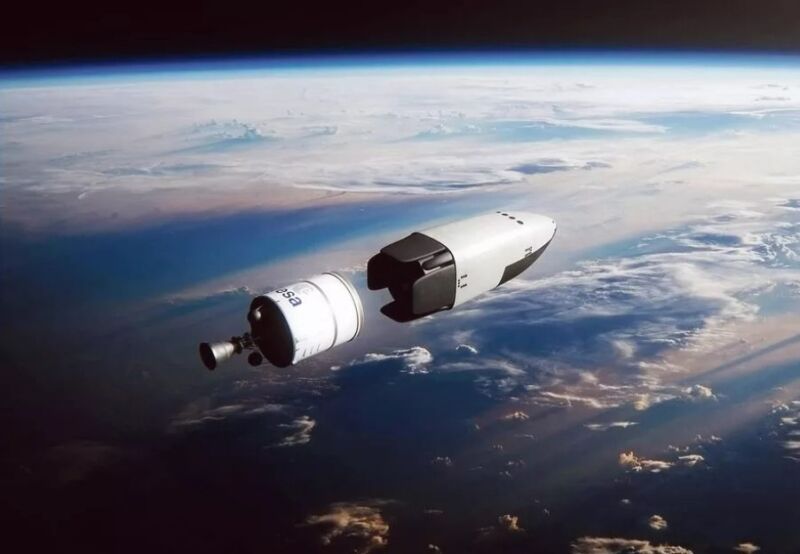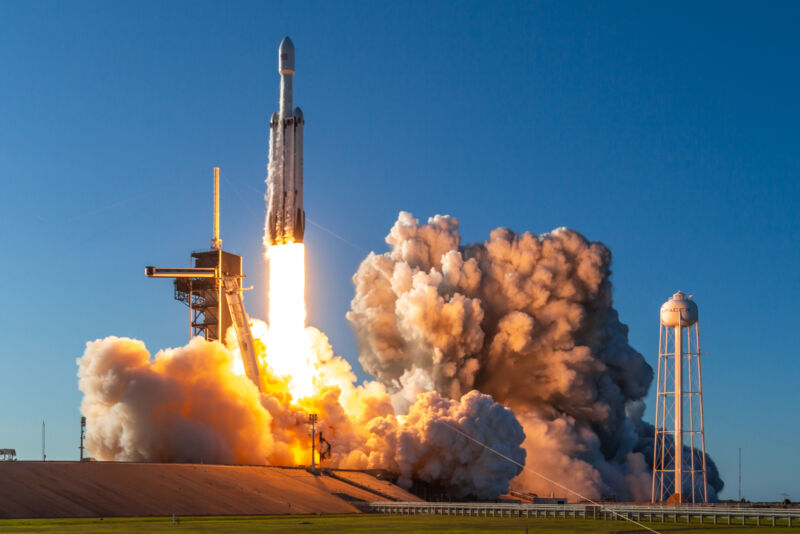
Welcome to Edition 5.11 of the Rocket Report! Apologies for the lack of a report last week, but I was on assignment with the crew of the forthcoming Polaris Dawn mission. The upside is that this week's edition is extra-long—running to 2,500 words.
As always, we welcome reader submissions, and if you don't want to miss an issue, please subscribe using the box below (the form will not appear on AMP-enabled versions of the site). Each report will include information on small-, medium-, and heavy-lift rockets as well as a quick look ahead at the next three launches on the calendar.

SpinLaunch raises $71 million. The company developing a launch system that uses a centrifuge as a first stage announced this week that it has raised $71 million, Space News reports. This brings the total funding secured by the company to $150 million, allowing it to develop a system that accelerates vehicles to hypersonic speeds. After the vehicles are, for lack of a better word, yeeted upward they use conventional rocket engines to reach space. SpinLaunch says this approach can enable a much higher flight rate than conventional rockets while also being more environmentally friendly.
Building a bigger centrifuge ... SpinLaunch built a smaller version of its centrifuge at Spaceport America in New Mexico, 33 meters in diameter, for suborbital tests. The company projects beginning orbital launches with a much larger accelerator, 100 meters across, as soon as 2026, and presumably the new funds will get it closer to that goal. I am interested to see if this approach works, as it is technically feasible. However, the challenges ahead of the company are significant. (submitted by Ken the Bin)
European launch CEO takes shots at startups. In an interview with L'Echo, CEO André-Hubert Roussel of Europe institutional launch developer Ariane Group took aim at the numerous launch startups around Europe, decrying the fact that these companies were pulling resources away from Ariane. Roussel appeared to target German microlauncher companies Rocket Factory Augsburg, Isar Aerospace, and HyImpulse in particular, although he did not name them directly, the Europe in Space newsletter reports.
Bringing nothing to the table? ... Roussel complained that these companies were duplicating what was already being done in launch and that in supporting these companies Europe was encouraging competition that brought "nothing" in terms of innovation to the table. Frankly, this is a really lousy attitude to have toward one's competition, and if I'm being honest it's hard not to root for the upstarts against the established industry.
Some in Michigan worry spaceport talk is all hype. After three years and $2.5 million in public dollars to study the creation of a spaceport in northern Michigan, some state officials are concerned about a lack of progress, Bridge Michigan reports. The state is still awaiting a final report from the Michigan Launch Initiative, a part of the nonprofit Michigan Aerospace Manufacturers’ Association, which was paid $2.5 million to study building launch sites. The concerns focus on project leader Gavin Brown, who said he secured the contract in 2019 after pitching it privately to former Gov. Rick Snyder at the end of his administration.
Announcement coming soon? ... State Sen. Jeff Irwin (D-Ann Arbor) questioned whether Brown overpromised what he can deliver. “For me, the most important thing is for the people to get value for the investment,” Irwin said. “He’s now produced [work] that doesn’t seem to be worth $2.5 million.” Brown remains bullish, telling the publication that he’ll prove critics wrong and hinting that a big announcement is coming soon. This echoes cautionary tales we heard in other states that were promised great riches from new spaceports.
Skyrora to launch from Canada. Scotland-based Skyrora announced this week that it would launch its Skyrora XL rocket from a spaceport under development in Nova Scotia by Maritime Launch Services. The three-stage rocket is designed to loft a maximum of 350 kg into low Earth orbit, and Skyrora completed a successful second stage static hot fire test at Machrihanish Airbase in Scotland in August.
A transatlantic partnership ... As part of the agreement, Maritime Launch will purchase the vehicles and vehicle support staff from Skyrora for its satellite clients. Spaceport Nova Scotia will provide Skyrora a launch pad, ground and operations support, public safety services, regulatory approvals, and mission integration facilities and staff. Much work remains, but good luck to both. (submitted by JS)
PLD Space nears suborbital test. A Spanish company developing a small launch vehicle says it is ready to proceed with the launch of a suborbital mission after completing a static-fire test. PLD Space conducted a 122-second test of its Miura 1 rocket September 15 at a company facility in Teruel, Spain, Space News reports. That firing, called the full mission test, came after two earlier static-fire tests lasting 5 and 20 seconds. The series of tests confirmed the vehicle is ready for an actual flight.
A stepping stone to orbit ... With the static-fire test campaign complete, PLD Space is ready to proceed with the first flight of the suborbital vehicle. That launch is scheduled for as soon as December from the El Arenosillo site in Southwestern Spain. “Our plan is to do two test flights,” said Raúl Verdú, chief operating officer. PLD Space has advertised the Miura 1 as a sounding rocket that can carry 100 kilograms to an altitude of 150 kilometers, generating up to four minutes of microgravity time. Verdú said the primary purpose of Miura 1 is to demonstrate technology for its Miura 5 orbital launch vehicle under development. (submitted by Ken the Bin)
Revisiting the 2014 crash of SpaceShipTwo. On Medium, an author who analyzes plane crashes recently called attention to Virgin Galactic's fatal crash eight years ago. On October 31, 2014, an experimental space plane operating for Virgin Galactic abruptly disintegrated at an altitude of nearly 17 km during a test flight, scattering debris over a vast area of California’s Mojave Desert. Although one of the two test pilots was killed, the other remarkably survived, parachuting to safety against all odds.
Falling short of the stars ... The destruction of the VSS Enterprise and the death of one of its pilots promised to be a major setback for the commercial space flight industry, which was then, as now, in its infancy. I included this item in the Rocket Report not to call down scorn upon Virgin Galactic, but rather because it is an excellent analysis after the fact, complete with sobering photographs. It's a reminder of the challenges in this industry that we're all following with such avidity.




3175x175(CURRENT).thumb.jpg.b05acc060982b36f5891ba728e6d953c.jpg)

Recommended Comments
There are no comments to display.
Join the conversation
You can post now and register later. If you have an account, sign in now to post with your account.
Note: Your post will require moderator approval before it will be visible.